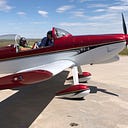Flying the A4 Skyhawk with the Royal Australian Navy — Part 2
Guest column by Peter (‘Purps’) Greenfield
The McDonnell Douglas A4 Skyhawk was the only aircraft I flew where I felt that I was in it, rather than occupying it. The cockpit was tight, to the point that your helmet ‘bonked’ the canopy in your struggles to see behind. You had to know where the switches were on the side panels purely by feel, especially beside your body. Once the canopy was down it was like flying in a glass bubble — the aircraft practically responded to your thoughts, rather than control inputs. There were two mirrors on either side of the canopy-bow at forehead height, which you adjusted like the wing mirrors of your car, enabling you to see across the arc obscured by the turtle-back into your 6 o’clock.
The aircraft was very agile, with half-span ailerons, a powerful rudder, and stabilizer with an elevator: a so called ‘flying tail’. Full aileron input would result in a 720° per second roll rate. Roll coupling was a serious problem, so there were speed limits for full input and roll limits as well. The aircraft did not have a dutch-roll problem, but it had a constant twitch in yaw which could be dampened by dabs of rudder. The AFCS (Automatic Flight Control System; or autopilot) had a full-time Stability Augmentation channel which was selected ON just after lift-off. It…
